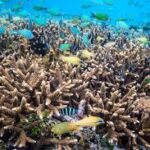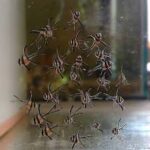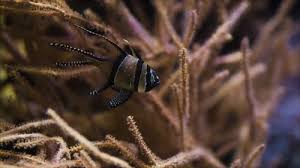
**Introduction to Environmental Conservation for Chamomile:**
Chamomile, prized for its medicinal properties and ecological significance, requires thoughtful environmental conservation measures to safeguard its habitats, biodiversity, and ecosystem services. As chamomile populations face threats from habitat loss, climate change, and anthropogenic activities, evaluating conservation strategies becomes imperative for preserving these valuable plant species and their associated ecosystems. This article explores various environmental protection measures aimed at sustaining chamomile populations and the biodiversity they support.
**Habitat Preservation and Restoration:**
Preserving and restoring natural habitats is fundamental to conserving chamomile and its associated species. This involves protecting wild chamomile populations in their native habitats, such as meadows, grasslands, and woodland edges, from urbanization, agricultural expansion, and land conversion. Conservation efforts may include establishing protected areas, nature reserves, and wildlife corridors to maintain suitable habitats for chamomile and facilitate gene flow among populations. Habitat restoration initiatives, such as reforestation, revegetation, and habitat enhancement projects, aim to rehabilitate degraded habitats, increase habitat connectivity, and create conducive conditions for chamomile growth and reproduction.
**Sustainable Land Management Practices:**
Implementing sustainable land management practices is crucial for minimizing environmental impacts on chamomile populations and promoting ecosystem resilience. Sustainable agriculture practices, such as organic farming, agroforestry, and integrated pest management, reduce chemical inputs, soil erosion, and habitat fragmentation in chamomile cultivation areas. Adopting agroecological principles, such as crop rotation, cover cropping, and polyculture systems, enhances soil fertility, biodiversity, and ecosystem services, benefiting chamomile agroecosystems and the surrounding environment. Furthermore, promoting sustainable harvesting practices, wildcrafting guidelines, and fair trade initiatives ensures the ethical and responsible exploitation of chamomile resources while conserving natural habitats and supporting local livelihoods.
**Climate Change Adaptation Strategies:**
Addressing the impacts of climate change is essential for the long-term survival of chamomile populations and their associated species. Climate change adaptation strategies focus on enhancing chamomile’s resilience to changing environmental conditions, such as temperature fluctuations, water scarcity, and extreme weather events. This may involve selecting climate-resilient chamomile cultivars, implementing water-saving irrigation techniques, and employing agroforestry practices to mitigate soil erosion and microclimate fluctuations in chamomile growing areas. Additionally, promoting habitat connectivity, genetic diversity, and ecosystem resilience through habitat restoration and conservation planning helps chamomile populations adapt to shifting climatic regimes and ecological dynamics.
**Community Engagement and Stakeholder Collaboration:**
Engaging local communities, stakeholders, and indigenous peoples in chamomile conservation efforts fosters stewardship, knowledge exchange, and participatory decision-making processes. Community-based conservation initiatives empower local residents to actively participate in monitoring, management, and conservation activities, promoting social cohesion, cultural preservation, and sustainable resource use practices. Collaborating with governmental agencies, non-governmental organizations (NGOs), and research institutions strengthens conservation efforts, leverages resources, and enhances capacity-building initiatives for chamomile conservation and sustainable development projects.
**Conclusion:**
Evaluating environmental conservation measures for chamomile flowers and related species is essential for safeguarding their habitats, biodiversity, and ecological functions. By prioritizing habitat preservation, sustainable land management, climate change adaptation, and community engagement, we can ensure the long-term viability of chamomile populations and their associated ecosystems. Through interdisciplinary collaboration, stakeholder engagement, and adaptive management strategies, we can address the complex challenges facing chamomile conservation and promote the sustainable use of natural resources for the benefit of present and future generations.
**Assessing Environmental Conservation Measures for Chamomile Flowers and Associated Species**
**Monitoring and Research Initiatives:**
Continuous monitoring and research efforts are essential for evaluating the effectiveness of environmental conservation measures for chamomile and related species. Long-term monitoring programs track population dynamics, habitat conditions, and ecological trends to assess the impact of conservation interventions and identify emerging threats. Research studies investigate the ecological requirements, genetic diversity, and population dynamics of chamomile populations, informing conservation strategies, habitat management practices, and restoration efforts. Collaborative research projects involving scientists, conservationists, and local communities generate valuable data, knowledge, and insights to guide evidence-based decision-making and adaptive management approaches for chamomile conservation.
**Education and Awareness Campaigns:**
Raising public awareness and promoting environmental education about the importance of chamomile conservation and sustainable land management practices is crucial for garnering support, fostering stewardship, and empowering local communities. Educational outreach programs, workshops, and training sessions engage stakeholders, farmers, and landowners in chamomile conservation initiatives, disseminating information on species identification, habitat protection, and sustainable harvesting practices. Awareness campaigns utilize various communication channels, such as social media, websites, and community events, to highlight the ecological significance of chamomile, its role in ecosystem health, and the importance of preserving its natural habitats for biodiversity conservation and ecosystem services.
**Policy Advocacy and Legal Protection:**
Advocating for policy reforms and legal protections for chamomile and its habitats is essential for ensuring their conservation and sustainable management. Lobbying efforts aim to influence government policies, regulations, and land-use planning initiatives to prioritize chamomile conservation, protect critical habitats, and mitigate anthropogenic threats, such as habitat destruction, pollution, and overexploitation. Advocacy campaigns mobilize public support, engage policymakers, and build coalitions with environmental organizations to advocate for the designation of protected areas, habitat corridors, and biodiversity hotspots to safeguard chamomile populations and promote ecosystem resilience in the face of environmental challenges.
**Innovative Conservation Strategies:**
Embracing innovative conservation strategies and technologies can enhance the effectiveness and scalability of chamomile conservation efforts. These may include using remote sensing technologies, geographic information systems (GIS), and drone mapping techniques to assess habitat quality, monitor population trends, and prioritize conservation priorities in chamomile growing regions. Employing blockchain technology, smart contracts, and digital platforms facilitates traceability, transparency, and ethical sourcing of chamomile products, ensuring compliance with sustainable harvesting practices, fair trade standards, and biodiversity conservation guidelines. Furthermore, integrating traditional ecological knowledge, indigenous practices, and agroecological principles into chamomile conservation strategies promotes cultural heritage preservation, fosters community resilience, and enhances ecosystem sustainability.
**Conclusion:**
Evaluating environmental conservation measures for chamomile flowers and associated species requires a multifaceted approach that integrates scientific research, community engagement, policy advocacy, and innovative solutions. By monitoring population dynamics, raising public awareness, advocating for policy reforms, and embracing innovative technologies, we can enhance the resilience and sustainability of chamomile habitats and promote the conservation of biodiversity and ecosystem services for the benefit of present and future generations. Through collaborative efforts, adaptive management, and inclusive governance structures, we can ensure the long-term viability of chamomile populations and their associated ecosystems, contributing to global efforts to conserve biodiversity and promote environmental sustainability.









